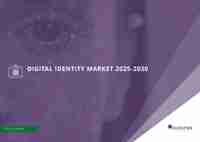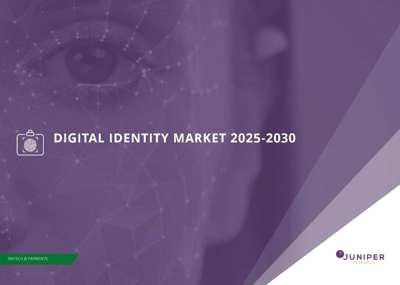The Current Digital Advertising Fraud Landscape
The Impact of COVID-19 on Merchants
Due to the COVID-19 pandemic, there has been a widespread acceleration of digitalisation across a number of different verticals. With government lockdowns in certain regions requiring the cessation of non-essential appointments, hospitality, personal care, retail and travel, enterprises and organisations have been forced to develop their digital presence at unprecedented rates.
As part of this digital transformation, there has been an increase in the number of organisations adopting an omnichannel approach to customer services, marketing, and sales, aiming to reach customers on their preferred platforms. This has led to a shift towards conversational messaging. As a result, there are now an unprecedented number of brands and enterprises with an online presence.
An Overcrowded Digital Advertising Space
This has led to an increasingly saturated advertising market, resulting in advertisements becoming more expensive, due to the increasing cost of hosting campaigns on advertiser networks. Importantly, this elevated expense does not necessarily translate into more efficient campaigns. With consumers bombarded with digital advertising campaigns on the majority of digital content sites, the probability of a consumer clicking on any given advertisement decreases due to the sheer number of competitor adverts.
Advertisers are now facing increased pressure to strengthen their online presence, whilst also having the awareness that online advertising involves costs and losses. Due to the prevalence of advertising fraud, advertisers must face the reality that as larger proportions of advertising budgets are allocated online, the amount lost to fraudulent online activity will also increase.
The Many Forms of Advertising Fraud
Ad fraud is a term used to describe any attempt to deceive digital advertisers or digital advertising networks for financial gain. Below, we provide an overview of the main forms of digital advertising fraud:
- Malicious Bots: A broad category in which fraudsters can use bots to generate large quantities of fake clicks on an ad, or fake visits to a website.
- Hidden Ads: Ads are placed in such a way that they are not visible to the consumer. This targets ad networks who pay based on impressions and views, rather than clicks.
- Install Hijacking & Click Injection: This uses a compromised app that is already on a device to detect installs; generating a click before the new app is opened.
- Click Flooding: Large quantities of clicks are generated with random device IDs; hoping that the legitimate user will install the application later.
- Click Hijacking: This involves compromising a user’s computer, an ad publisher’s website, or a proxy server.
Five Key Ad Fraud Markets
The 5 key markets in which digital advertisers are most at risk of falling victim to digital advertising fraud are the following: the US, Japan, China, South Korea and the UK. Notably, there have been several high-profile court cases related to ad fraud within the US, including the Methbot fraud scheme and Uber’s win of a multi-million-dollar settlement for alleged ad fraud.
► Digital Advertising Fraud Market Research
Our latest research found:
- The value of digital advertising spend lost to fraud will reach $68 billion globally in 2022; rising from $59 billion in 2021.
- The top 5 countries most impacted by advertising fraud, which together account for 60% of global losses, include: the US, Japan, China, South Korea and the UK.
- Those advertising in the US will potentially suffer the most in financial loss due to fraudulent activity, with total losses in the US expected to surpass $23 billion in 2022.
- The most successful ad fraud detection tools will harness machine learning algorithms to compare advertising traffic with previously observed, verifiable baseline data.
Latest research, whitepapers & press releases
-
 ReportDecember 2025
ReportDecember 2025AI Agents for Customer Experience Platforms Market: 2025-2030
Our comprehensive AI Agents for Customer Experience Platforms research suite comprises detailed assessment of a market that is set to disrupt mobile communications. It provides stakeholders with insight into the key opportunities within the AI agents for customer experience platforms market over the next two years.
VIEW -
 ReportDecember 2025Fintech & Payments
ReportDecember 2025Fintech & PaymentseCommerce Fraud Prevention Market: 2025-2030
Our eCommerce Fraud Prevention research suite provides a detailed and insightful analysis of this evolving market; enabling stakeholders from financial institutions, law enforcement agencies, regulatory bodies and technology vendors to understand future growth, key trends, and the competitive environment.
VIEW -
 ReportNovember 2025Telecoms & Connectivity
ReportNovember 2025Telecoms & ConnectivityeSIMs & iSIMs Market: 2025-2030
Juniper Research’s eSIMs and iSIMs research suite offers insightful analysis of a market set to experience significant growth in the next five years. The research suite provides mobile network operators (MNOs), original equipment manufacturers (OEMs), and eSIM management and platforms vendors with intelligence on how to capitalise on the market growth, and guidance on how eSIM-only devices and sensors, SGP.42, in-factory provisioning, and iSIMs will change the competitive landscape.
VIEW -
 ReportNovember 2025Fintech & Payments
ReportNovember 2025Fintech & PaymentsModern Card Issuing Platforms Market: 2025-2030
Our Modern Card Issuing Platforms Market research suite provides a detailed and insightful analysis of this evolving market; enabling stakeholders from banks, financial institutions, fintech companies, and technology vendors to understand future growth, key trends, and the competitive environment.
VIEW -
 ReportNovember 2025Fintech & Payments
ReportNovember 2025Fintech & PaymentsDigital Wallets Market: 2025-2030
Our digital wallets research suite provides detailed analysis of this rapidly changing market; allowing digital wallet providers to gain an understanding of key payment trends and challenges, potential growth opportunities, and the competitive environment.
VIEW -
 ReportOctober 2025Fintech & Payments
ReportOctober 2025Fintech & PaymentsDigital Identity Market: 2025-2030
Juniper Research’s Digital Identity research suite provides a comprehensive and insightful analysis of this market; enabling stakeholders, including digital identity platform providers, digital identity verification providers, government agencies, banks, and many others, to understand future growth, key trends, and the competitive environment.
VIEW
-
 WhitepaperDecember 2025Telecoms & Connectivity
WhitepaperDecember 2025Telecoms & ConnectivityHuman + AI: Drivers of Customer Experience AI Agents in 2026
Our complimentary whitepaper, Human + AI: Drivers of Customer Experience AI Agents in 2026, examines the key drivers of the AI agents for customer experience platforms market in 2025.
VIEW -
 WhitepaperDecember 2025Fintech & Payments
WhitepaperDecember 2025Fintech & PaymentsBeyond Chargebacks: The True Cost of Fraud for Digital Commerce
Our complimentary whitepaper, Beyond Chargebacks: The True Cost of Fraud for Digital Commerce, examines the state of the eCommerce fraud prevention market; considering the impact of evolving digital fraud strategies, including key trends such as identity theft, account takeovers, chargebacks, policy abuse and friendly fraud.
VIEW -
 WhitepaperNovember 2025Telecoms & Connectivity
WhitepaperNovember 2025Telecoms & ConnectivityeSIM-only Devices: The Impact on Operators, Consumers, and IoT
Our complimentary whitepaper, eSIM-only Devices: The Impact on Operators, Consumers, and IoT, explores the challenges and opportunities for the three segments, with a particular focus on eSIM-only smartphones and SGP.42.
VIEW -
 WhitepaperNovember 2025Fintech & Payments
WhitepaperNovember 2025Fintech & PaymentsUnlocking the Next Stage of Growth for Modern Card Issuing Platforms
This free whitepaper analyses key trends shaping the modern card issuing space, and the ways in which modern card issuing platforms can capture growth.
VIEW -
 WhitepaperNovember 2025Fintech & Payments
WhitepaperNovember 2025Fintech & PaymentsTop 10 Fintech & Payments Trends 2026
Fintech is evolving fast. From stablecoins to agentic AI, our annual guide reveals the shifts redefining payments, digital identity, and the future of money in 2026. Download your copy today.
VIEW -
 WhitepaperNovember 2025Fintech & Payments
WhitepaperNovember 2025Fintech & PaymentsDigital Wallets: Empowering Financial Inclusivity
Our complimentary whitepaper, Digital Wallets: Empowering Financial Inclusivity, examines the state of the digital wallets market; considering the impact of digital wallets on different geographies, how they are shaping the modern payments landscape through lower transaction fees and promoting financial inclusivity for underbanked populations, and how they are competing with established payment methods.
VIEW
-
Telecoms & Connectivity
AI Agents to Power 1,000% More Customer Interactions for Enterprises Globally by 2027
December 2025 -
IoT & Emerging Technology
Global D2C Revenue Set for $370 Million Surge, But Satellite Operators Should Not Chase Full MNO Status
December 2025 -
Fintech & Payments
Digital Goods Fraud to Cost eCommerce Merchants $27 Billion Globally by 2030 as AI Tools Accelerate Attacks
December 2025 -
Fintech & Payments
AML Adoption to Hit 3.8 Million Businesses Globally by 2030, With Europe at the Forefront
November 2025 -
Telecoms & Connectivity
eSIM Connections to Grow 300% Globally in Next 5 Years, as China Presents Instant Opportunities
November 2025 -
Fintech & Payments
Cross-border A2A Transactions to Surpass 11 Billion in 2026 Globally, Thanks to Enhanced Interoperability
November 2025



















